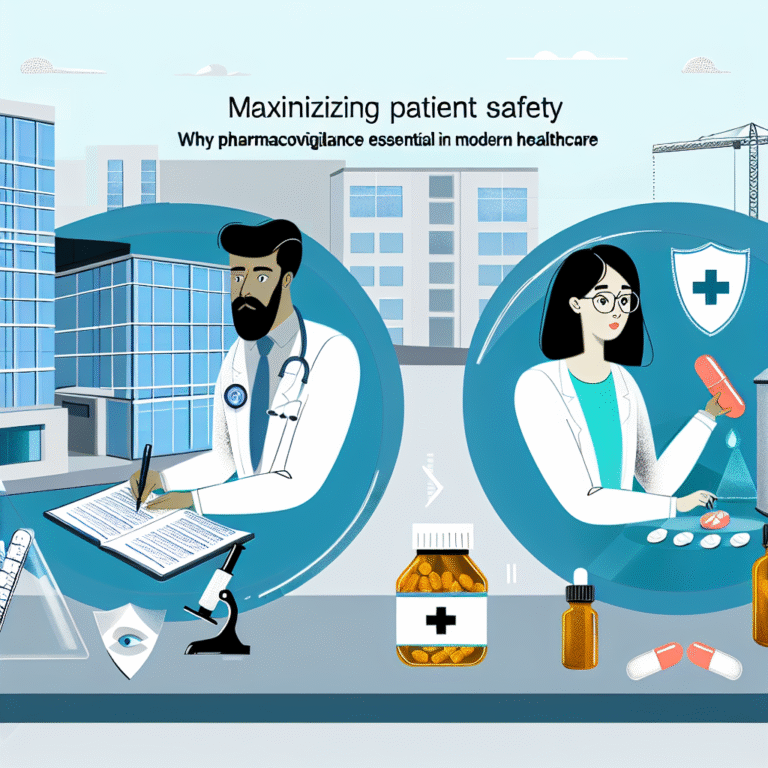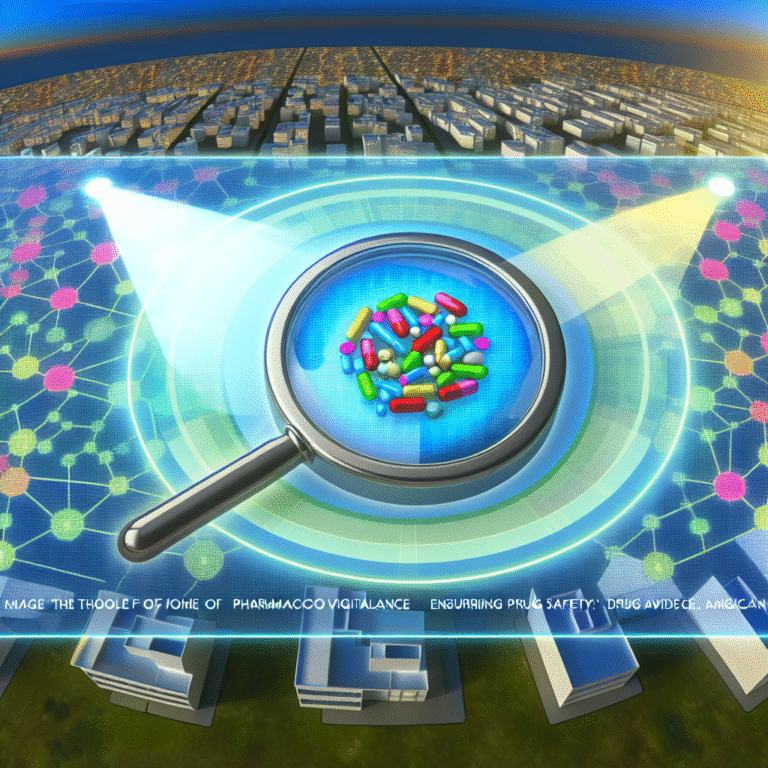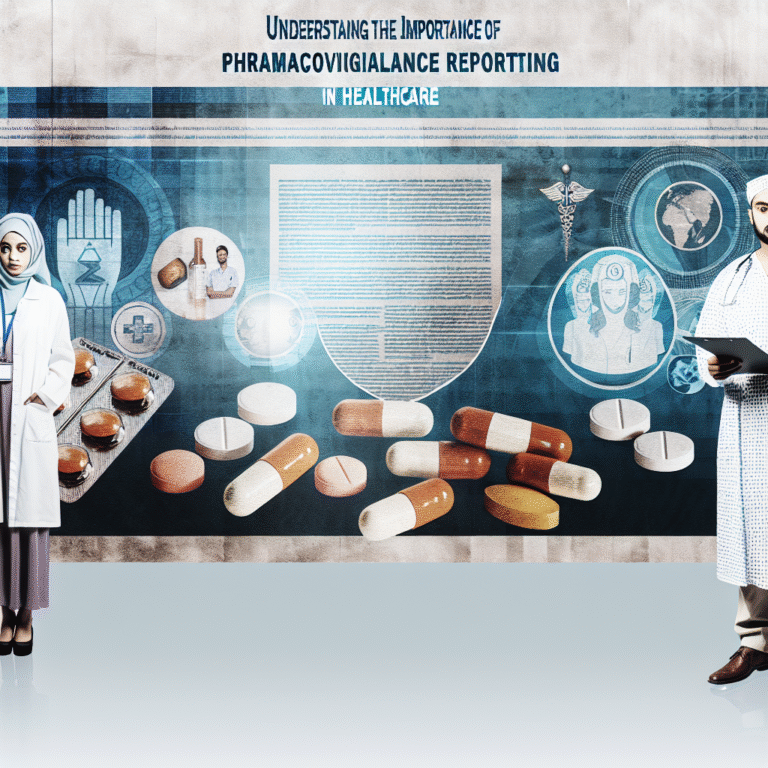Pharmacovigilance Essentials: A Comprehensive Guide to Drug Safety and Reporting
**Pharmacovigilance Basics: Understanding Drug Safety and Reporting**
**Introduction**
Pharmacovigilance is the science of looking out for bad effects of medicines and trying to stop them. It’s super important because it helps us make sure that medicines are safe for everyone to use. Today, as medicine and health care get more complicated, keeping track of drug safety is more crucial than ever. Knowing drug safety well helps us trust the medicines we take.
This guide will help doctors, pharmacists, and anyone taking medicine understand pharmacovigilance better. Knowing how to keep drugs safe and report problems can help everyone make health care safer.
**What is Pharmacovigilance?**
Pharmacovigilance means watching over medicines from when they are made to after they are sold. Here’s what it’s about:
1. **Definitions**
– **Pharmacovigilance:** It’s about finding out if drugs have bad effects and working to stop those effects.
– **Drug Safety:** Making sure drugs help more than they harm when people use them.
2. **Role in Drug Development**
– Pharmacovigilance checks drug safety during tests and when it’s sold in stores.
– It helps keep patients safe by watching how drugs act on different people.
3. **Historical Evolution**
– It began in the 20th century when there were big drug problems like the thalidomide crisis.
– These issues showed why we need strict rules, which led to the creation of protective bodies globally.
**Important Terms and Ideas**
1. **Adverse Drug Reactions (ADRs)**
– Bad reactions from taking medicine that needs medical help or changing the medicine plan.
2. **Side Effects vs. ADRs**
– **Side Effects:** Expected reactions at usual doses.
– **ADRs:** Are less expected and can happen at normal doses.
3. **Signal Detection**
– This means finding new or changing safety problems with a drug through careful study and reports.
4. **Risk Management and Minimization**
– Figuring out risks and creating plans to prevent them, keeping people safe.
**Rules and Guidelines**
Many groups work internationally to keep drugs safe:
1. **FDA (Food and Drug Administration)**
– Looks after drug approval and safety in the USA.
2. **EMA (European Medicines Agency)**
– Makes sure drugs are safe all over Europe.
3. **WHO (World Health Organization)**
– Works on making sure drugs are safe everywhere in the world.
Some important rules include:
– **GVP (Good Pharmacovigilance Practices):** Rules for keeping drug safety watchful.
– **ICH E2E:** Plans for checking on drug safety.
**Steps in Pharmacovigilance**
1. **Data Collection**
– Collecting reports from doctors, patients, and drug trials.
2. **Signal Detection**
– Using numbers, smart computers, and experts to find risks.
3. **Risk Assessment**
– Comparing possible dangers with the benefits of the drug.
4. **Risk Management**
– Making plans to tell doctors and patients about risks or changing how a drug is used.
5. **Communication**
– Sharing findings with doctors, health officials, and patients to help them make better choices.
**Technology in Pharmacovigilance**
1. **Software Solutions**
– Platforms to help collect and report bad drug events fully.
2. **Artificial Intelligence and Machine Learning**
– Helps find patterns in large data that people might miss.
3. **Emerging Technologies**
– Using blockchain for safe data sharing, wearable devices for tracking health, and apps for reporting health issues.
**Challenges in Pharmacovigilance**
1. **Under-Reporting**
– Many bad events don’t get reported, so data is incomplete.
2. **Data Quality**
– Ensuring information is spot-on, trustworthy, and quick.
3. **Multi-Source Data Integration**
– Merging data from different sources, like health records, is tough.
4. **Public Concerns**
– Teaching people about drug safety to stop wrong information and build trust.
**Best Practices for Good Pharmacovigilance**
Doctors and companies can support good practices by:
1. **Making Reporting Easy**
– Setting up simple ways for reporting drug problems for anyone.
2. **Continual Learning**
– Keeping professionals up-to-date on medicine safety news.
3. **Building Partnerships**
– Working closely with health agencies, drug companies, doctors, and patients.
**Real Examples and Lessons Learned**
1. **Safety Practices That Work**
– Using smart strategies to handle risky drugs safely.
2. **Learning from Mistakes**
– Stories like the thalidomide case show why careful drug watching is vital.
3. **Worldwide Initiatives**
– WHO’s check on global drug safety shows international commitment.
**Future of Pharmacovigilance**
1. **Big Data and Real-Life Evidence**
– Using lots of information to see how drugs act in different situations.
2. **Predictive Analytics**
– Seeing risks before they get bigger.
3. **Working Together Globally**
– Making worldwide rules for a standard drug safety world.
**Conclusion**
To wrap up, pharmacovigilance is a key part of keeping everyone healthy and safe. As it grows, keeping up with new methods and practices is important. Everyone involved should stay informed, involved, and dedicated to drug safety, ensuring public trust remains strong.
**References**
For more on pharmacovigilance, you can check:
1. WHO: “Pharmacovigilance: Ensuring the Safe Use of Medicines.”
2. FDA Pharmacovigilance Guidelines.
3. European Medicines Agency’s Pharmacovigilance info.
Join us at Pharmacovigilance Foundations to learn more about drug safety and its importance in health. Meet with experts, access helpful resources, and help make medicines safer.






